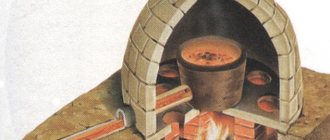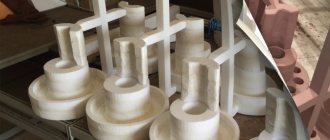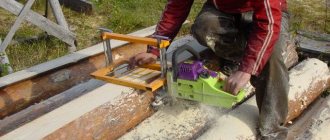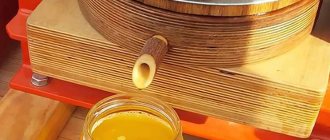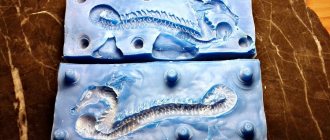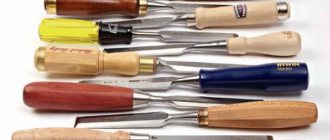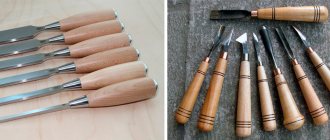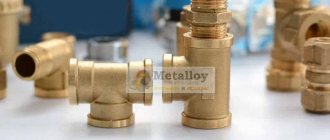Most anglers, when equipping their fishing rods, are faced with the need to load the bait. Both bottom fishers and spinners have to weigh down their rigs or artificial fish so that they quickly reach the bottom or fly far. Sometimes during a fishing trip you can leave your entire arsenal of fishing weights in a catchable but snagged area of the reservoir. Some amateurs do not have the financial means to constantly replenish lead supplies, while other fishermen find it difficult to get to specialized stores. In such cases, molds for casting sinkers will come to the rescue. Due to the low melting point of lead and its availability, the necessary cargo can be cast directly on the shore of the reservoir. What types of weights are there?
Content
- Materials
- Samples
- Mold making
- Casting sinkers
- Pros and cons of making your own sinkers
Hi all! Today I want to share my ideas, best practices and experience in making lead weights for spinning fishing.
I’ll say right away: this method is only suitable for small batches and simple shapes of sinkers. For example, I would recommend making collapsible Cheburashkas using aluminum molds, which I use myself)
Before the start of the season, I decided to add weights to my collection - “bullets”, for the increasingly popular jig-rig.
Materials
So where do we start? First, we need to prepare a set of materials for making molds for our future sinkers. I make the forms from ordinary building plaster.
I use stainless steel wire with a cross section of 0.8 mm. Also, we will need ordinary disposable containers, any fatty cream, such as “baby”, water and an old spoon.
Pour fishing weights into molds
To obtain calibrated weights of various shapes and weights, metal molds of various types are used.
Let's look at how to cast weights in a metal mold of this type:
The form consists of two halves. After pouring, you should get sinkers weighing 130 grams with swivels.
In addition to lead, we will need two clamps for clamping forms, swivels and files with cutters for removing roughness from the resulting weights. Before casting the weights, lubricate all molds with machine lubricant so that the weights can be easily removed after pouring.
First, we insert the swivels into the four sinker molds.
Then we press the halves together with clamps.
Next, set to heat the lead in a suitable container. This mold has large enough sprues, so there won't be any problems with casting. That part of the lead that remains near the sprues is collected and used in the next pour.
Place the mold on a flat surface. When the lead melts, we begin to pour:
We clamp the container in which the lead is melted with pliers, and begin to carefully pour the lead into the holes.
After pouring, wait a few minutes and disassemble the mold. The result should be ribbed weights like this:
It needs to be slightly processed with a file. Remove the section from the sprue side. Large growths can be bitten off with nippers, after which the area can be treated with a file. As a result, you can make a very large number of sinkers.
They can be used in feeder fishing to break through the bottom. Such heavy sinkers are useful for bottom fishers when fishing in strong currents. They fly far and hold the bottom well.
Samples
These are ready-made sinkers, purchased or previously manufactured. Any thing can serve as a model. I made one sample from a real bullet)
The shape can be slightly adjusted with plasticine, but only a little, because... When the gypsum sets, it releases heat and a large volume of plasticine will simply melt. In this case, I took the bullets I had previously made and equipped them with wire loops, fixing it all with green plasticine.
Mold making
You need to prepare the gypsum mixture according to the “powder to water” rule, in a ratio of approximately 1:1, you need to focus on the consistency, it should be creamy.
Pre-lubricate our mold and samples with the prepared fatty cream.
Pour the mixed plaster into the container to fill exactly ½ of the container and tap it on the surface, expelling air bubbles. As soon as the gypsum begins to set, it is necessary to immerse our samples halfway in the hardening plaster. The setting time of the gypsum depends on the brand of the powder itself, the minimum time is 2 minutes, i.e. after 2 minutes we begin to carefully look at the surface of the plaster. As soon as it becomes matte, it’s time!
We insert guides along the edges of our form. It can be anything, I use pieces of wire, toothpicks, lollipop tubes.
Now we wait for complete hardening, 20-30 minutes is enough.
Then we lubricate the surface of the mold and the samples recessed in it with our rich cream.
We dilute the plaster again and fill the container to the top. We also remove air bubbles by tapping and leave to harden for the same 20-30 minutes.
After hardening, carefully remove the mold from the container and carefully separate it into two halves, removing the samples.
That's it, the form is ready! We leave it to dry for a couple of days near the battery - the water should completely evaporate.
So I made 3 molds with different weights. Before the molds become unusable, the weights cast in them will last me for 2 or 3 seasons). The main disadvantage of such forms is their fragility. Gypsum is a fairly fragile material, so molds quickly crack, caverns and chips appear in them, especially for split molds. Bullet molds last much longer. For example, the uniform shown in the photo in the article is already in use for the second or even third season.
After the mold has completely dried, it is necessary to make sprues. To do this, mark the line of the sprue, connect the mold and drill out the sprue in the shape of a funnel using drills of different diameters. For the top point of the funnel I use a 10.1mm drill, for the bottom I use a 3.5mm drill.
Where can I get lead?
Do-it-yourself fishing sinkers are poured from any lead that you have on hand. The easiest way to obtain lead is to go to a tire shop and buy used balance weights. Such lead will cost much less than if you buy sheet lead. You can buy the required number of kilograms and get a large number of weights from them for various purposes. The only thing to consider is the steel pieces molded into the middle of some of the weights. It is advisable to remove them during melting. But you usually don’t come across many such sinkers. The weights can be melted all together without sorting them by density.
The second way to extract lead is from old batteries. It is better to find points where they accept old batteries and buy them at a reasonable price. This is a more complicated method, since you will have to disassemble the batteries to remove the lead.
The third way to get lead out of cable braids. It is made of sheet lead with a thickness of 1, 1.5 and 2 mm. If you know any electricians, ask if they can get this braid. From such lead you can not only cast weights, but also cut strips for feeder feeders.
The most expensive way is to buy lead. It is sold in sheets and ingots. Better, of course, is sheet metal, but its size is very large. In such cases, fishermen unite and buy one sheet together.
You can also make weights with your own hands from old weights, which almost every angler probably has.
One thing is certain: absolutely any lead is suitable for casting sinkers with your own hands. It doesn't matter if it has impurities, or how dense or soft it is. Our task is weights for bottom fishing.
Casting sinkers
Now we can start casting the lead weights! To do this we need wire for the ears, lead, a torch or crucible and a clamp.
We bend the ears from the wire using pliers and put them into the mold.
We connect the two halves of the form and fix them with a clamp.
Melt the lead. I have old cheburakhs, tire weights and other lead scrap. I heat up the lead with a gas torch, it literally takes a few minutes, it’s very convenient! Next, pour the lead into the sprues and let it cool, that is, when you pour it into the last mold, the first one has already cooled down, everything is very fast!
Now we separate the mold and remove our weights.
Next we repeat in the same sequence.
Weights are cast very quickly, sometimes before fishing I remember that I have run out of a load of a certain weight, and then, in literally 20 minutes, I cast the dozen or one and a half weights I need. It takes less time than going to the store for the same goods)
In this way, you can experiment with the shapes and weights of sinkers, and invent some special shape of sinkers that are not available in stores. For example, last season I experimented with stick weights, making several versions of non-snagging weights with different lengths and diameters. The weight of such “stick” sinkers can be reduced directly while fishing, thanks to the small diameter of 6 and 8 mm (if you need to reduce the weight, you can simply bite off part of the sinker with pliers). Also, thanks to such diameters, the load passes 95% of hooks!
Another simplest form for casting weights is the “bullet” for Carolina. To make such a mold, you need to pour plaster into any sufficiently high mold, I took the cap from an aerosol can, and simply place the bullet samples coated with the same cream on top with the sharp side into the hardening plaster - that’s it, the mold is ready.
To cast such bullets, it is necessary to insert a “mortgage” made of steel wire, lubricated with ordinary toilet soap, into a mold, and pour lead on top. That's all.
The insert is removed from the bullet, leaving a hole for the fishing line.
Equipment Workshop
First, let me tell you about my unsuccessful experiences in creating a mold for casting lead weights. Perhaps this will keep many from repeating my sad experience. For those who want to get to the essence of a proven working method, read point 2.
1. Trial and error.
In search of a method for casting weights, I read a lot of materials. I read a lot about weights with clamps, and wooden forms, and steel forms, with replaceable (plug-in) horns for holes in the weights. But it seemed to me that all this was too labor-intensive in the conditions of a 9-story building with a minimal set of tools and materials. Therefore, I decided to make an injection mold from building materials (gypsum, finishing putty, cement, clay...). To begin with, I assembled a collapsible box from rough boards found on the balcony and a piece of chipboard for the bottom. I’ll say right away that I didn’t think about its beauty at all, so I assembled it in 20 minutes. I sawed the board into 4 parts, almost by eye. I screwed 2 opposite sides to the bottom with self-tapping screws. The remaining two sides are inserted between them and screwed with the same screws to the already standing sides. In order to get the finished form, remove the two sides that are not attached to the bottom.
At first there was a decision to make weights on wire clamps. To do this, I bought plasticine, made a mold from it and lowered it into a prepared solution of Knauf finishing putty. After complete hardening (about 4 days), I took out the plasticine. But there were shells and other irregularities on the form. I puttyed them and, after drying, sanded the entire shape. I found a steel wire. But he didn’t immediately bend the clamp, but simply poured a loop into the lead. After the lead has hardened. It was not possible to get the load, despite the smoothness of the shape. I had to split it in half. However, if you tie it with wire, you can pour and pour, and then take out the weights halfway (by simply untying the tie). But this did not suit me, because later I suffered a lot with bending the steel wire. I abandoned this idea.
I decided to cast standard loads. I tried to make a beautiful shape out of plasticine, but it didn’t work. “I gave up” on this matter and bought a beautiful load in the store for $5. And it began...
The first form is made of putty. A complete disaster, this time for some reason it didn’t dry out and didn’t grab properly, and when I tried to get the load, it fell apart in pieces.
Hmm... What can you come up with? Maybe cement. Fine. I filled it with cement, which was better, but the horns (which later make the longitudinal holes) fell off immediately. And a piece of the mold also fell out.
Maybe clay? So that it does not stick too much to the load. The clay cracked and the entire mold fell apart piece by piece, not to mention the horns, which immediately remained in the lead weight.
The next attempt is with plaster (it’s in the 1st photo). Gypsum has huge advantages, namely: it hardens in a matter of minutes and after hardening it is sooooo strong.
The first plaster mold did not work out for the same reason - I couldn’t pull out the load, it stuck there. The horns broke off immediately. And to get the load I had to break the mold.
Second attempt with plaster. But this time I tried buttering the load. It’s already better, but still not the same, the load is difficult to get, the shape breaks!
... (cleaning the cargo cover, polishing the cargo, pulling it out until it hardens, etc.)
The last most successful attempt. The mold is all made of the same plaster. The cargo was covered with tape over the entire area. In addition, he then coated it with oil. It fell out of the mold quite easily. The shape turned out beautiful. Plus, minor flaws were covered up and polished with fine sandpaper. Everything is great! But…. After casting the first load, the horns fell off along with the finished product... B...! The horns fell off “beautifully”, that is, evenly, without crumbling. I put them in place. And he tried to pour out the second load. This time they fell off and completely crumbled.
2. Hurray! It's working!
After the attempts described above, I decided to turn to the World Wide Web and came across a website of people who are engaged in independently casting soldiers, small weapons for these soldiers, etc. The process itself is as follows:
and came across a website of people who are engaged in independently casting soldiers, small weapons for these soldiers, etc. The process itself is as follows:
We will NOT need wood, steel sheets, welding, a file, a hacksaw, a milling cutter, a cutting wheel, or a hammer. Everything we need is shown below:
Everything we need is shown below:
That is, you will need plaster (in this case I used building plaster, alabaster) and building silicone. Yes, yes, silicone. Although its instructions say the operating temperature is up to 120 degrees, people still cast soldiers (although it contains tin, and its melting point is much lower than lead)!!! What came of it later - a little later. It is better to buy transparent silicone, if only because the surface being treated and air bubbles can be seen through it. which can then give a “shell”. The original source recommends either transparent or black silicone. White is a little worse. Initially I had leftover white, and only for the 2nd layer I bought transparent.
The cost of gypsum is 1 dollar per 2 kg, silicone - 2 dollars per bottle. The bottle should be enough for a load weighing 1 kg.
In addition, of course, we will need a container for casting a plaster mold (not a mold for the load!!!, but an auxiliary one), the load itself, which we will clone (you can either buy 1 for “breeding”, or ask a friend for a while, or sculpt it yourself from plasticine), in the shape you like.
Next, I painted the cargo with white (well, whatever it was ) water-based paint. Why her? for me , because you can then wash it off completely and polish it with a wet washcloth, and it’s easier to wash your hands. You can cover it with acrylic paint and polish it, or simply cover it with a thin but greasy layer of something (machine oil, sunflower oil, margarine, plasticine, rub it on a pie :lol:). The coating is necessary so that the silicone can be peeled off from the load more easily.
) water-based paint. Why her? for me , because you can then wash it off completely and polish it with a wet washcloth, and it’s easier to wash your hands. You can cover it with acrylic paint and polish it, or simply cover it with a thin but greasy layer of something (machine oil, sunflower oil, margarine, plasticine, rub it on a pie :lol:). The coating is necessary so that the silicone can be peeled off from the load more easily.
We place the prepared cloned load with the flat side (the one that will then be pressed against the catch ) on a smooth surface. In my case, it was a glossy lid from a shoe box. What does smooth surface mean? Again, this means that we will have to easily tear off the silicone from it without damaging the integrity of the latter.
) on a smooth surface. In my case, it was a glossy lid from a shoe box. What does smooth surface mean? Again, this means that we will have to easily tear off the silicone from it without damaging the integrity of the latter.
And then we coat the load with silicone.
Attention! It smells very strongly of vinegar and other chemicals, so you need to work in a well-ventilated area or even outside!
The original source advises applying layers no larger than 3 mm and drying each layer for at least 8 hours. I admit honestly – I couldn’t stand it. I immediately filled the outside of the load with a 3-mm layer, and filled the inside part, where the cutouts for the belt are, completely, that is, it turned out to be a kind of cake.
Separately, I would like to note that it is necessary to squeeze out all the air from the silicone and fill all the cavities of the mold. I did it with my finger. Silicone cannot be washed off with anything ! However, it can be successfully wiped off with toilet paper. And the thinnest layer on the fingers then goes away on its own.
Oh, this impatient one! The cardboard with the weight poured on it, so that it would dry faster, was put in the oven. Warmed it up 3 times to about 60-80 degrees. It stank... Mom, don't worry!
After that, I laid it all out on the closed balcony. There really wasn’t any sun, but it wasn’t in vain that I posted it. Because the next evening after work, there was a nasty smell on the balcony.
After that, I decided to add another layer of silicone, because 3 mm is still not enough. However, not believing in this whole idea, I decided to pick out the load and see what happened, so that if something happened, I would not waste time and silicone further. To do this, I carefully, consistently, tore off the dried silicone around the perimeter so as not to tear it. Gradually, circle after circle, he tore off more and more. In the end, I was left in my hands with a silicone cake with a load immured in it. In the same way, slowly, I sequentially tore off the silicone from the load. Moreover, turning out already torn parts is quite acceptable. Soon he released the entire load. Damn, it turned out beautiful! I used nail scissors to cut off all the excess sagging. Then he inserted the weight back and put it back on the cardboard.
After this, I applied another control layer of silicone. And then the same thing, drying in the oven, on the balcony.
The next evening, I diluted the plaster, poured it into a molding box and lowered a cake into it on top, with silicone in the plaster, of course.
Some clarifications. The plaster mold around is only needed for hardness, because the silicone mold is easy to warp with the same molten lead, consider it rubber. Plaster hardens very quickly! There was a case where I didn’t even have time to dilute it and it began to turn into stone. If it still seems to you that the gypsum is taking a long time to harden, add table salt to the water, the hardening reaction will speed up much more. The hardening time of the gypsum is about 10-15 minutes. Yes, after this it is still wet, but it is already very strong, even with a screwdriver it is difficult to pick
There was a case where I didn’t even have time to dilute it and it began to turn into stone. If it still seems to you that the gypsum is taking a long time to harden, add table salt to the water, the hardening reaction will speed up much more. The hardening time of the gypsum is about 10-15 minutes. Yes, after this it is still wet, but it is already very strong, even with a screwdriver it is difficult to pick
Initially I thought that the silicone mold would then have to be pulled out of the plaster mold. for extracting cast cargo. No, you don’t have to, the lead itself falls out with a bang, but more on that later.
That's almost all. Literally 30 minutes after “plastering” I really wanted to try to pour out the load. So what if the plaster is still wet? The main thing is that he is already like a stone, and you can’t pour lead into plaster!
I read that it is better to treat the mold with graphite so that the lead can be separated more easily. To do this, I disassembled the AA battery. It has a central rod made of graphite. I rubbed graphite on a file, poured it into the mold and rubbed it evenly with my finger. Graphite is very difficult to clean, be careful.
It is unlikely that you will get a good load the first time, because you need to catch the “horizontal” of the shape. That is, to pour lead into a strictly horizontal profile.
The first heat was difficult. Slightly acrid clouds of white vapor (smoke) rose from the silicone.
Again, I didn’t want to wait for the loads in the mold to cool down. And why should silicone be subjected to high temperatures once again? Therefore, as soon as the lead “set” a little, I sprayed water on it from a flower spray bottle. So it cooled down a little. How to pick out the finished cargo? Let's start with the easy methods. I cover the pan with a wooden cutting board. And I turn it over. Nothing. I knock on the bottom of the mold. Boom! Yes, the load fell out quite easily. Place the mold back on the stove. Place the weight in a bowl of water to completely simmer and not burn the kitchen cutting board. Subsequent weights fell out on their own, without knocking. Be careful, it’s still a kilogram blank, the temperature is much more than a hundred degrees...
And why should silicone be subjected to high temperatures once again? Therefore, as soon as the lead “set” a little, I sprayed water on it from a flower spray bottle. So it cooled down a little. How to pick out the finished cargo? Let's start with the easy methods. I cover the pan with a wooden cutting board. And I turn it over. Nothing. I knock on the bottom of the mold. Boom! Yes, the load fell out quite easily. Place the mold back on the stove. Place the weight in a bowl of water to completely simmer and not burn the kitchen cutting board. Subsequent weights fell out on their own, without knocking. Be careful, it’s still a kilogram blank, the temperature is much more than a hundred degrees...
By the way, it is better to melt lead while wearing clothes and glasses, God forbid lead will splash!
I didn’t remove the container with molten lead from the heat, I just made it quieter so that the lead didn’t boil.
Comment! I think everyone knows, but I’ll repeat myself. Lead vapors, and lead itself (especially in the form of a bullet ) are very harmful to the body. You need to work with it in a well-ventilated area or outside.
Lead vapors, and lead itself (especially in the form of a bullet ) are very harmful to the body. You need to work with it in a well-ventilated area or outside.
We carry out quality control inspection of the received cargo. 1 kg. Class!
I level the “horizontal” of the form (for the first time I noticed where and how much the form should be tilted) and pour a second load, a third... until the lead runs out.
What happened to silicone? The top layer of the mold, which was in contact with molten lead, became the consistency of heated plasticine, but this layer is not critical, tenths of a millimeter. The form itself has not deteriorated one bit.
Moreover, using my finger, taking advantage of the softness of the top layer, I covered up all the irregularities 
Externally, the weights, of course, did not turn out to be for an exhibition, but they perform the main function, namely, they pull to the ground with their 1-kilogram mass. But it is also impossible to say that they turned out to have a very disgusting surface.
But it is also impossible to say that they turned out to have a very disgusting surface.
True, I had to wipe all the received loads with toilet paper, because they seemed to be greasy to the touch.
For connoisseurs of beauty, I can suggest the following treatment: wash the received loads with some cheap solvent, and then paint them either with anti-gravel (if you want “rubber-coated” loads), or with “household” acrylic paint, or with automotive aerosol paint. Color from black to bright pink! Fantasize yourself! 
So far I have got 5 loads of 1 kg each. I think the shape will hold up for a long time. At least I know for sure that I will run out of lead sooner. And I also think it will be enough for all my friends if they bring me lead.
I think the shape will hold up for a long time. At least I know for sure that I will run out of lead sooner. And I also think it will be enough for all my friends if they bring me lead.
However, in contrast, I can say that “industrial” production of cargo will not work in this way.
Good luck to you!
Finished products: on the left are 2 freshly cast using the “new” technology, on the right in the foreground is a cloning object, behind it is a load obtained from a purely plaster mold.
View of the uniform after all the melts. Black is graphite. The photo is bad, overexposed, but there is a silicone mold in a plaster mold. Marker notches turned out to be unnecessary.
Here I show that the silicone mold has not lost its flexibility and is still completely viable.
Pros and cons of making your own sinkers
The most important advantage is the low cost of the resulting weights. It is also important that you can always cast the missing weights within 10-15 minutes if you have ready-made molds. I practice this quite often; before fishing, I quickly cast a dozen weights, if necessary.
Another plus for these homemade products is that you can choose a special shape and weight of the sinker for your fishing conditions, equip it with any accessories, “play” with the diameter and size of the loops, etc. Also, this is a quite exciting and educational lesson in physics and chemistry for your children! Children are happy to get involved in the process, even for this alone it’s worth trying to make a mold and cast weights yourself!
Now about the disadvantages: the most important one, as I already mentioned, is the fragility of the form. You can add reinforcing additives to gypsum, such as lime and others, but this will not fundamentally change the situation. Also, one of the disadvantages of this method is a certain amount of flash on the finished weights, this applies to collapsible forms. A mold for a “bullet” with a hole is the most successful option both in terms of durability and ease of making the mold, and in terms of casting the sinkers themselves. I 105% recommend making a mold for bullets! Another disadvantage is the difficulty of marking such cargo. The grams have to be marked manually.
In general, making such sinkers does not require any special equipment or any special knowledge or skills, everything is extremely simple!
That’s probably all, if you have any questions, write in the comments, I’ll be happy to answer;)
Pour out the cone weights
Donkers and spinning fishermen often use hand-made conical weights. The former are used because they fly far and accurately, while spinners use them in spaced rigs. Making these weights yourself is very easy. You don't even need forms. We will need hard paper, with which we will make cones in the form of small bags.
We also need thin and stiff wire. From it we will make eyelets through which the weights will be attached to the main fishing line.
We will pour the sinkers with our own hands in exactly the same way as last time. Instead of a gas burner, you can use a portable one with two burners. It will be possible to pour in two containers to make the process faster. In this case, place the jars on the stove at intervals of 5 minutes. The lead has melted in one, pour it straight into the molds. After this operation, the lead should melt in the second container.
We insert wire staples into the paper molds so that the eye sticks out from the top of the cone. We immerse the molds in the ground so that they take a vertical position. We select the size of the molds experimentally. We estimate by eye what kind of weight we need. As a standard, you can take a 35 gram weight and look at it. It will be enough to pour out the first batch of sinkers for fishing with your own hands. We will use the resulting weights as samples when we make molds for the next batches.
The pouring process is identical to the previous one. You can use an unnecessary metal mug as a container for lead. It is convenient to take it by the handle and pour lead from it. To avoid burning your fingers, it is better to wear gloves on your palms. After pouring, you should wait a little and remove the weights from the molds. We just tear off the paper without sparing, since initially the molds are disposable.
